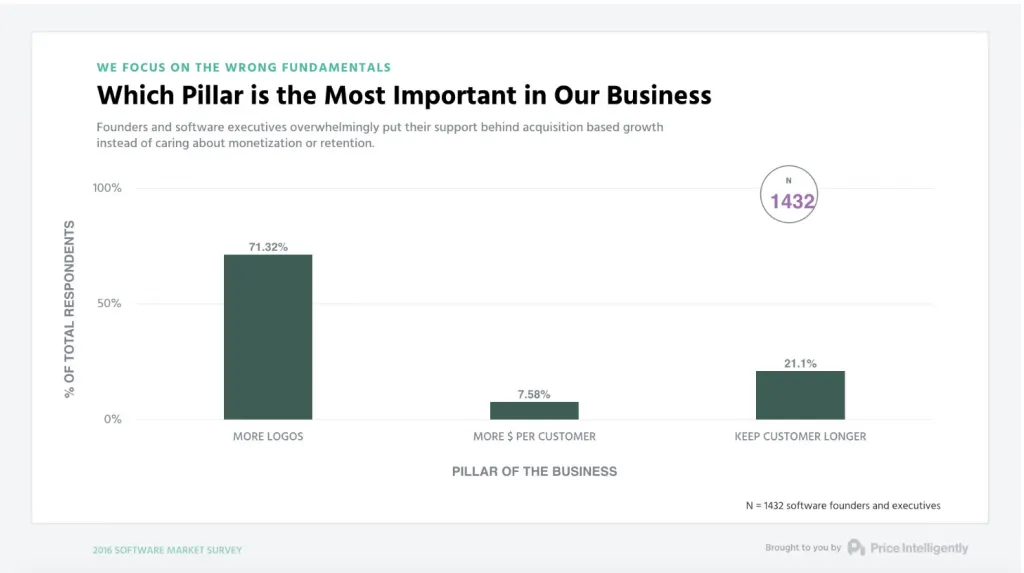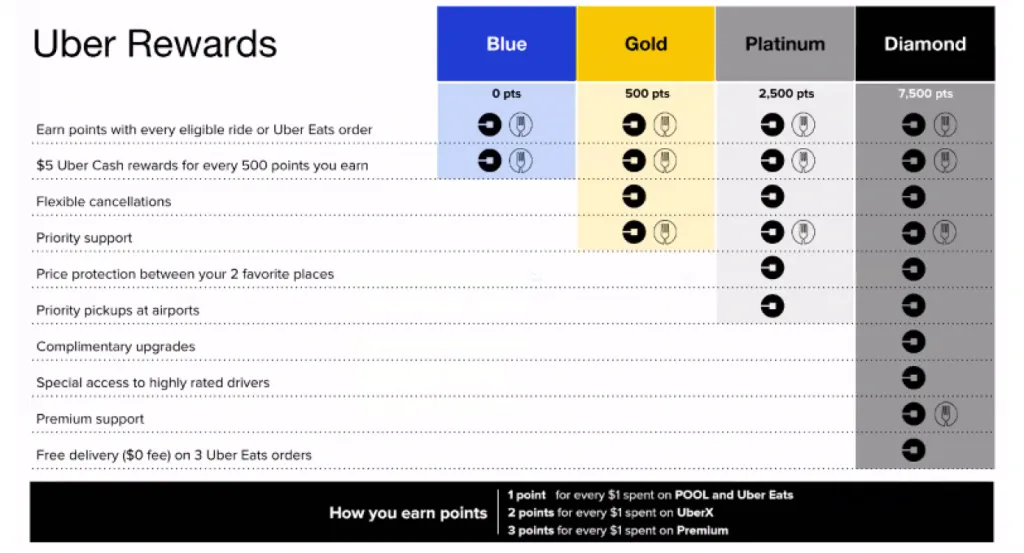The Problem with Acquisition-Based Growth (and what to do instead)
Customers are complicated.
Between selling to them, convincing them to stay with you, and trying to get them back if they leave, a lot of time and money goes into building a profitable user base in the digital economy.
It’s natural to want new customers, but what many companies don’t realize is that focusing too much on acquisition can quickly end up hurting your bottom line.
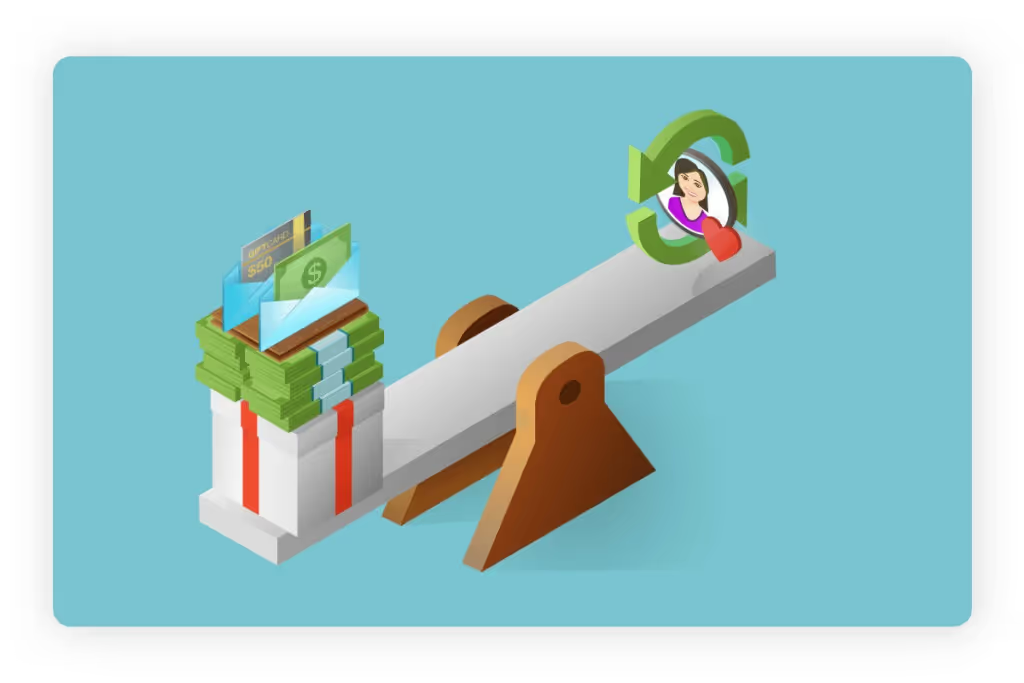
Acquisition costs are rising, customers are more independent, and it takes a lot more effort to convince anyone you’re worth the investment. Despite this, almost half (44%) of companies focus more on customer acquisition than retention. (source)
Only 18% of companies do the opposite - they realize that the best customers to invest in are the ones they already have. Existing customers spend more, purchase more often, and represent one of your best acquisition tools.
We don’t suggest dropping all new customer acquisition efforts, but overwhelming data suggests that there’s a major missed opportunity in not adding customer retention strategies to your marketing mix.
In this article, we’ll help you understand why your best chances at growth come from the customers you already have, and how you can use loyalty programs to generate more business out of them.
Why are we like this? The roots of our acquisition obsession
Numbers from the Invesp blog indicate that almost half of companies (44%) focus more on getting new customers than keeping the ones they already have.
Interestingly enough, when you flip the question and ask companies what they think they should focus on, 56% advocate for an equal focus on acquisition and retention, and only 21% think they should focus more on acquisition. (source)
These beliefs are much different than reality. So why do we still spend so much time and money on new-customer acquisition?
It’s the dominant viewpoint in the content we read
ProfitWell analyzed over 10,000 blog posts on growth and found that more than 7 out of 10 of these focus on acquisition strategies, while about 2 out of 10 focus on retention. (source)
Less than 1 out of every 10 posts on growth is written on monetization (ie. ways to increase customer lifetime value).
If enough reputable sources promote customer acquisition as the best growth tactic, it’s no surprise that this opinion is widely adopted.
Growth is largely understood as a linear progression
Almost every marketer is familiar with the path to profitability that we all strive for:
Get customers → Get them paying → Keep them around as long as you can (ie. a simplified version of the customer lifecycle model)
It’s natural to assume everything moves from left to right - that growth is only a result of getting more customers. This leads us to assume that the most logical way to get more customers is to go after brand new prospects.
While this statement has truth, the most valuable place to start is actually at the other side of the funnel - by focusing on the customers you already have.
Acquisition is a widely-understood, ego-boosting metric
A sales rep telling the CEO about 100 new customers they signed this month is likely to get more praise and recognition than the customer success rep who solved 30 client issues.
New customers feel like progress, while it can be more difficult to measure the exact impact of every retention effort - especially when retention campaigns can take longer to produce results.
It’s unclear how to implement a retention strategy
The fact that most companies believe they should be focusing more on retention but ultimately don’t is a good indication that many marketers simply don’t know what to do with customers once they acquire them.
Alternatively, they just don’t want to address it. Uncovering churn rates can be daunting, so businesses tend to avoid it. We’re not saying retention is easy - but it’s worth it.
To learn more about retention marketing strategies, check out this article.
The trouble with an acquisition-obsession in the digital economy
• Acquisition is getting more expensive: Customer acquisition costs for both B2B and B2C companies have increased by nearly 50% over the past five years. The cost of digital advertising alone is rising at close to 5x the rate of inflation.
This is largely the result of increased competition, changing consumer habits, and fraudulent traffic. If your cost to acquire a customer is $500, but their average lifetime value is only $300, you won’t see a positive return on the investment you made to acquire them, and eventually drive your profits down.
• Acquisition is getting harder to do: With access to reviews and comparisons online, consumers consistently report that salespeople are their least trusted source of information when making purchase decisions. Meanwhile, the least trustworthy advertising mediums are online and social media.
A 2018 survey revealed that 81% of consumers trust their friends and family’s advice over advice from a business, making your existing customers your best acquisition tool.
• Acquisition isn’t the most effective use of resources: Research from ProfitWell revealed that retention and monetization efforts have 2-4 times the impact on a company’s bottom line when compared to the same level of effort on acquisition.
This means a 1% improvement in retention is a much better use of your financial and human resources than a 1% improvement in acquisition.
Many companies who focus heavily on customer acquisition have also adopted the “customer replacement” mindset.
The danger with this viewpoint is it fails to take into account everything you risk losing in relation to the customer: their knowledge, their willingness to refer others, their positive opinion towards your brand, and all the money you spent to acquire them.
Why customer retention deserves more of your attention
Let’s be clear. Acquisition efforts are important - your customers need to start somewhere. But these efforts are a waste of money unless you work to retain your users.
Why should you work on retaining your customers?
• Retention saves you money: It’s 5-25 times cheaper to retain existing customers than to go after new ones. You already have their data on hand, you know they have a need for your product/service, and you don’t need to start from square one with the advertising pitch.
• Retention is your best acquisition tool: Motivating existing customers to advocate on your behalf can bring in your best customers - Referred customers are 18% more loyal, spend 13.2% more and have 16% higher lifetime values than non-referred customers. (source)
Your best customers end up feeding “top of the funnel” efforts through reviews, referrals, and user-generated content.
• Retention drives more profit: Increasing retention rates by 5 percent can increase profits by up to 95%. This is largely a natural result of the first two points - when you save money and attract better customers, your profits increase.
Better yet, existing customers will spend more: 67% more than first-time customers.
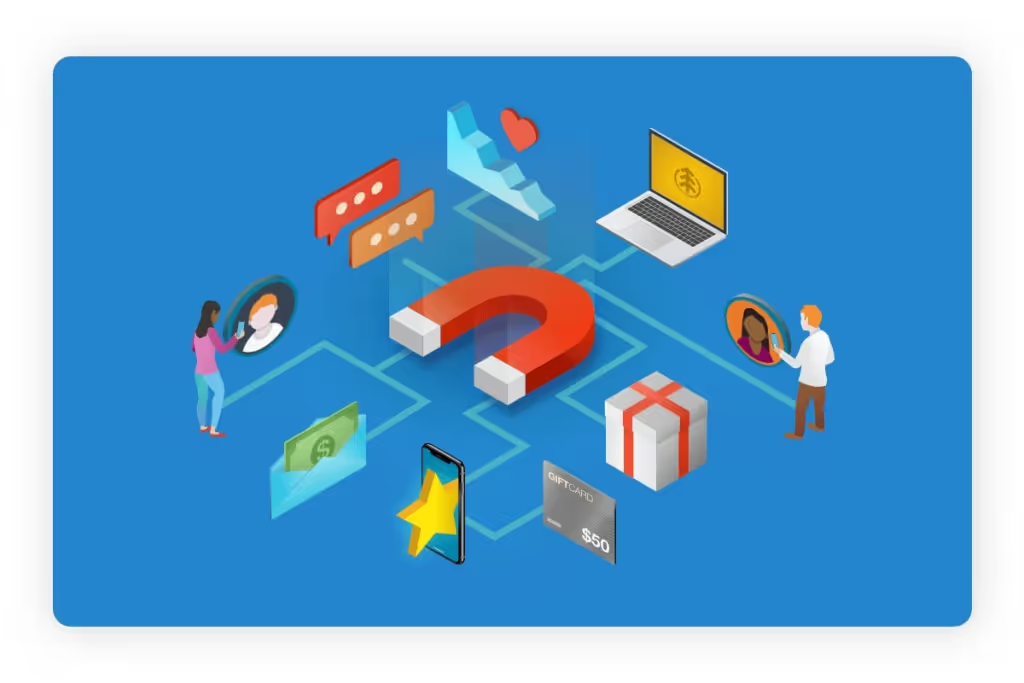
Improve retention rates with loyalty programs
Retaining customers means helping them see a reason to stay engaged with your brand.
Loyalty rewards are one of the best ways to show customers that you care about their experience and that you appreciate when they support your business.
Here’s how to boost customer retention and monetization with loyalty programs:
Increase customer lifetime value with a VIP program
A VIP program offers exclusive rewards to your top customers, giving them more reasons to spend with your brand. The benefits of a VIP program are reserved for your best customers – those who significantly contribute value to your product or service, usually in the form of repeat purchases.
With a desirable set of rewards to be attained, a customer’s average spend amount increases in order to reach and maintain VIP status with your brand. Even if they don’t reach the VIP level, the challenge to attain it increases their usage and spending.
A great example is seen in Uber’s new loyalty rewards program: The more points you collect from using Uber, the higher reward tier you achieve. The higher tier you achieve, the more valuable your points become, and the better perks you can access.
A businesses loyal top 10% of customers spend almost 3x more per transaction than the lower 90% of customers, and a VIP works to retain them.
Re-engage old customers with a win-back initiative
A win back program helps identify and incentivize your best-lost customers with special rewards, encouraging them to re-activate their subscription or complete a new purchase.
Even if a customer has gone quiet, you still have a 60-70% chance of success to sell to them again, while the chances of success for selling to a new potential customer are only 5-20%. (source)
Not only is a win back program an effective way to re-engage customers and reduce churn, but when done right it increases spending frequency, helps promote new services, and boosts the lifetime value of your clients.
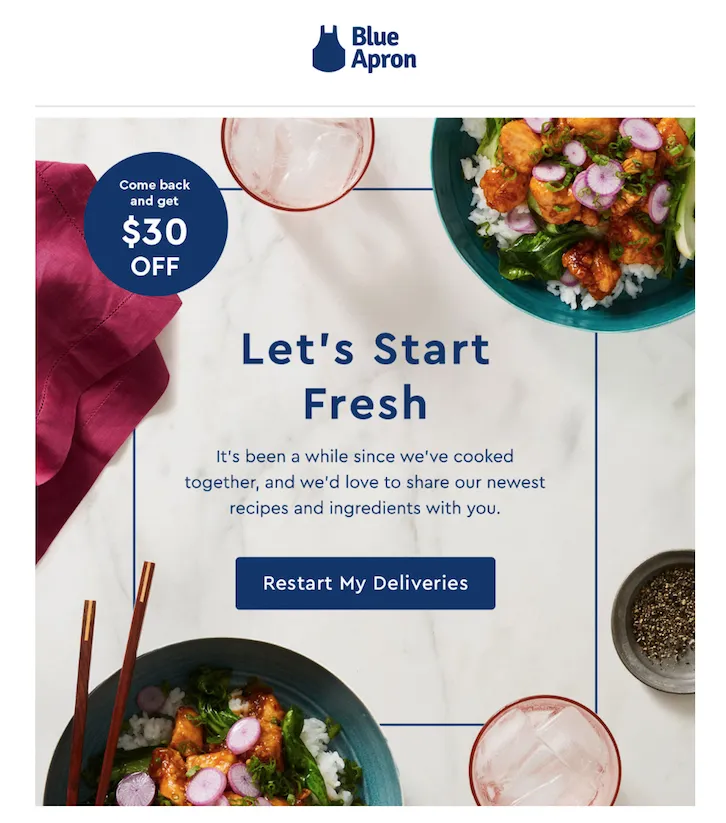
Boost acquisition through to retention with referral programs
Referral programs are the best way to leverage retention as an acquisition tool. Second-time customers refer an average of three people to a business, and people are four times more likely to buy when referred by a friend.
Turn your top customers into brand advocates by offering rewards for new-customer referrals, or implement a formalized partner program for other companies to sell on your behalf in exchange for unique rewards and commission.
Referral programs not only find you new customers, but potentially your best customers. Referred customers are 18% more loyal, spend 13.2% more and have 16% higher lifetime values than non-referred customers. (source)
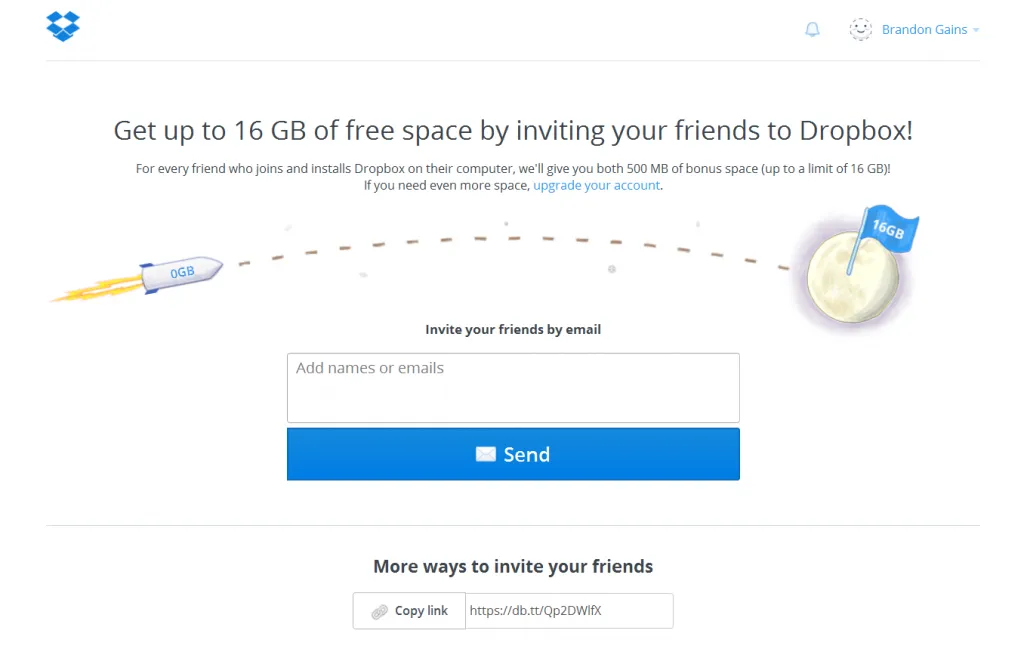
For more examples of loyalty programs that help you acquire, retain and increase the lifetime value of customers, check out this post!
Final Thoughts
Opportunities for growth shouldn’t be limited to brand new customers.
To survive in the digital economy, you need to realize the value of the customers you already have, and use retention strategies to maximize value from each user.
Remember to be patient with your customer retention efforts. The results and impact may not be as immediately obvious as those of an acquisition campaign, but there’s no evidence to indicate it’s not worth the investment.
To learn more about designing a successful loyalty strategy in the digital economy, sign up for the Digital Loyalty Academy today. Free access for the first 700 students.
